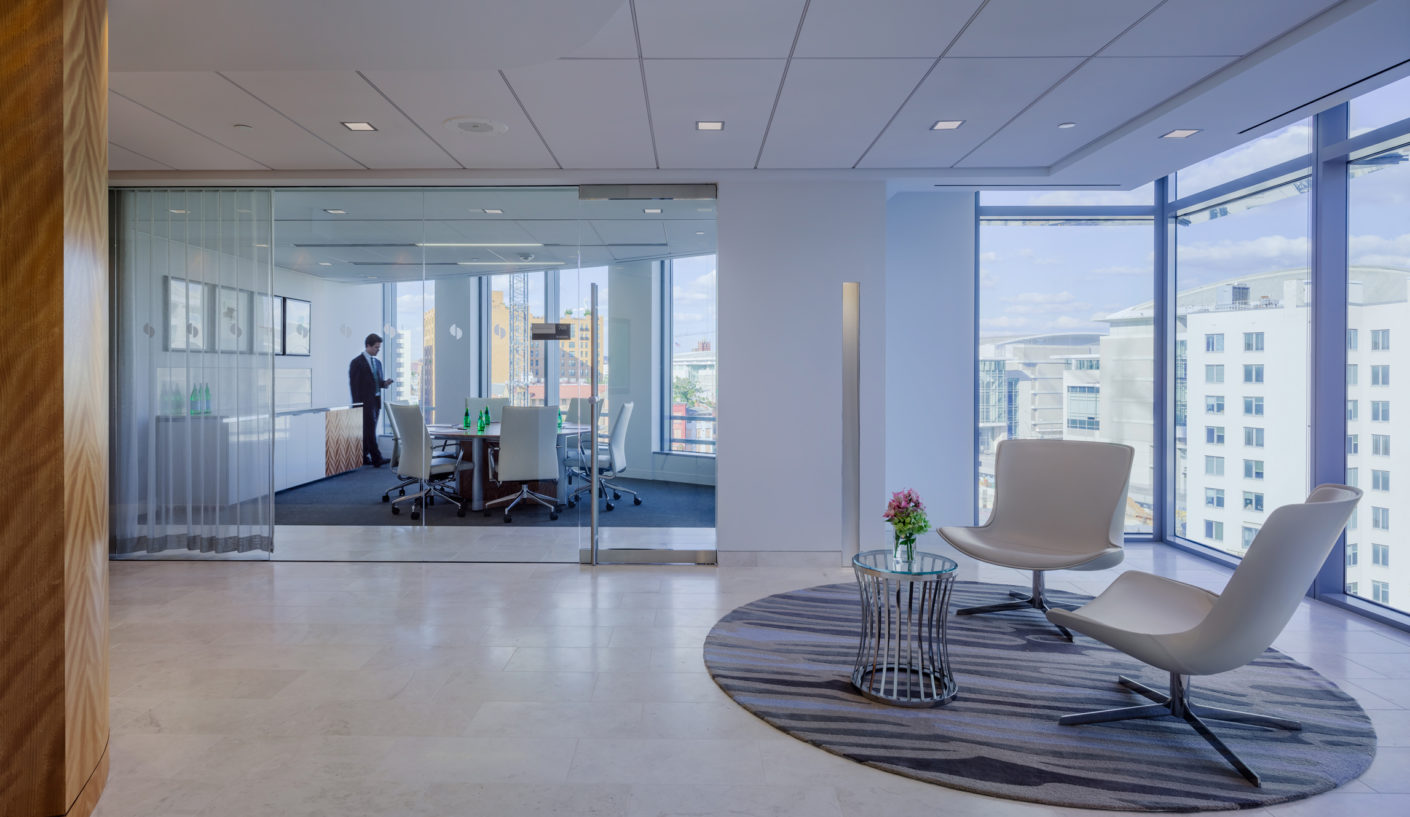What does the future hold for law firm design?
Alongside nearly every industry, law firms had to adapt to remote work overnight in the wake of the COVID-19 pandemic, and many found surprising success with this new way of working. Even a couple of years ago, it was rare to work with a law firm that explicitly sought to support different styles of working—whether that meant encouraging cross-practice collaboration or allowing hybrid work. The longer-term policies and practices for hybrid work are still in development, but it’s clear that the concept of a traditional workstyle is out the door.
At Perkins&Will, we work with numerous law firms and clients across industries ranging from tech companies to banking institutions to develop sustainable long-term strategies. Our commitment to designing client spaces that enhance company culture, promote employee well-being, and adapt to evolving business goals hasn’t changed since the onset of the pandemic. We’ve always kept an eye towards the future, pushing the boundaries of law firm design and workplace strategy.
As we continue to think about the shifts law practices will make in the coming years, we strongly believe that simply following current or historic trends will no longer set your firm apart from the competition. Rather, we discussed and applied what we’ve learned in our own law firm projects over the past year and how legal client desires have evolved. We have forged a new way of thinking about design for legal practices, with a focus on differentiation that will help our clients to win the ongoing war for the best talent.
 Office designed by Perkins&Will for the law firm Schiff Hardin LLP
Office designed by Perkins&Will for the law firm Schiff Hardin LLP
Make Room for Flexibility
Nearly all our current and prospective legal clients across each of our studios—in, New York, London, and Dallas—have requested designs to accommodate more progressive work styles. We’re as likely now to test desk-booking systems and investigate storage lockers as we are to design private perimeter offices. As firms ask for guidance about returning to their physical offices, prospective clients are paying more attention to spaces that draw in staff and clientele. If they’re leasing a new space, they’re often selecting amenity-rich locations to create an exceptional client and employee experience.
With increasing adoption of hybrid work, employees want more from offices for collaboration, creation of culture, and the ability to do “heads down” work. Law firms with spaces that support a variety of workstyles and activities will rise to the top, while supporting the essential work that fee earners need to do in the office.
As law firms are rethinking office design, their appetite for case studies from legal peers hasn’t subsided. However, we’ve had more requests for case studies from other industries, such professional services. We don’t believe that all law firms will move to a fully open office floor plan, but interest in the designs of other industries’ offices echoes an increase need for collaboration and how to best use their real estate with a new hybrid working model. Though much of legal work will always require private, quiet spaces to focus, we’re working to design generative spaces that encourage people from different practice areas to work together and spark new breakthroughs.
We are also seeing an increase in cross practice collaboration and the need to break down silos throughout the firm. Law firms continue to compete with other industries to recruit and retain employees. To do so, offices will need to balance vibrant spaces to stimulate creative thinking with quiet spaces that accommodate intense focus and confidential work.
.jpg) Oficina diseñada por Perkins&Will para el despacho de abogados Schiff Hardin LLP
Oficina diseñada por Perkins&Will para el despacho de abogados Schiff Hardin LLP
Design with Data
For years, benchmarking project data has and will continue to be a valuable way of understanding how various spaces in the office might work for our clients across all industries. However, the past 18 months changed nearly every expectation for offices. Rather than relying on historical data, we’ve honed our approach to collecting and analyzing data at point-of-need. We’re seeing law firms shift towards valuing current data, whether we’re creating a predictive modeling dashboard that adjusts square footage depending on usage or developing unique workplace personas to illustrate how employees will use the space.
We have also found more of an emphasis on gathering qualitative data as well—speaking to people, talking through various options and scenarios for their future office is essential. This hunger for data is growing as we spend more time with legal clients in the strategic planning phase of a project and design concept floors and mock-up spaces to test proof of concept.
A data-driven design foundation is crucial as we all come to terms with just how unpredictable the future is. Technologies that were once found only in rapidly changing industries are crossing over to the legal field. Artificial intelligence, mixed reality, and predictive analytics are changing the legal landscape, and those changes have already come to office environments. While the pandemic accelerated technology adoption, it also brought certain spaces closer to their demise. Filing rooms and libraries were less important to law firms over the past few years, and as firms consider a wireless and paperless future, these spaces are unlikely to regain prominence.
Knowing the futility of designing for future predictions, our studios design for adaptability. This allows our clients to be nimble during near-constant change instead of straining with each attempt to flex and fit to a new circumstance. Law firms with an adaptable design and mindset will find their office space continues to deliver high-performance results in the future.
Related links
Main menu









